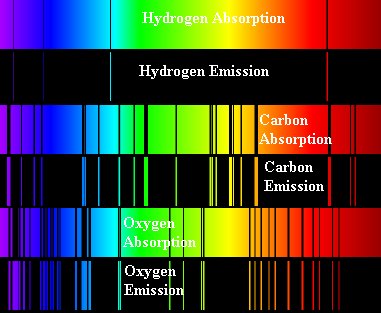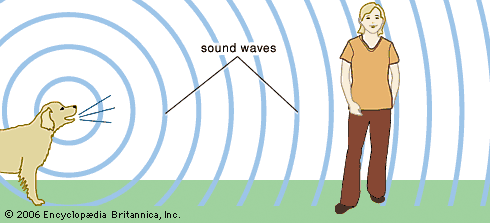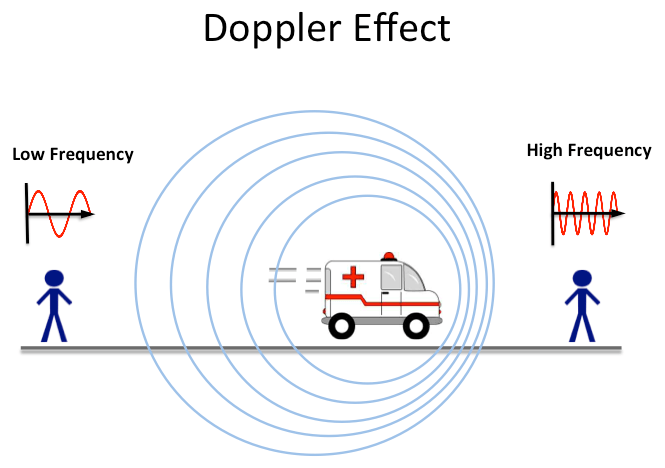
Have you ever heard the ice cream truck?
When I was little, I remember hearing the ice cream truck all the time. Just the sound of the opening notes of “Pop Goes the Weasel” were enough to propel me to the door, where I’d beg my parents to let me go out.
Of course, I didn’t always make it out front in time. But one day, my dad found a way to solve that problem—by actually getting in the car and chasing the ice cream truck.
I remember us driving around the neighborhood, following that white truck around. A few times, it slowed and stopped, but when we stopped too, it kept going again. It took a while for the driver to realize we were following him!
Eventually, we caught it, and had a good laugh over it. But the moral of the story is…have you ever noticed that you can tell if something is moving toward you or away from you, just by if it’s getting louder or quieter?
The same trick works for stars…sort of.
It’s called the Doppler effect.
I once had an astronomy teacher in high school who was a little misinformed about the Doppler effect. She believed that if you looked in the sky and saw a blue star, you could tell it was moving toward you…and the reverse if you saw a red star.

Okay, I’m sorry, but…WRONG!
Yeah, um, that’s…not even close.
I’ve explained in a previous post why stars are different colors. It has to do with how hot they are and their wavelength of maximum intensity. Basically, if a star is emitting blue light more intensely than any other wavelength of radiation, it will appear blue.
I think I know how my teacher got confused, though. The Doppler effect works for light just as well as for sound, and you can tell whether the object is moving towards you or away from you based on the redshift or blueshift.
Okay…what does that even mean?
Well…consider the electromagnetic spectrum.

You may recall from previous posts of mine that the electromagnetic spectrum is a spectrum of all radiation, including visible light. That’s the bit that you see in a rainbow.
Now, take a closer look at the visible portion of this spectrum. Notice how one end of the spectrum is red and the other is more blue?
Well, technically the other end is purple, but you get what I mean…
Anyway…astronomers rarely deal with an uninterrupted spectrum of light like this. If they did, it would be called a continuous spectrum.
More often, what they see looks like this…

Whoa…what happened to those rainbows?
Well, believe it or not, these slightly less perfect rainbows are actually more useful to astronomers. That’s because, as I’ve said before, every material in the universe produces lines like these—and you can use them to tell what material it is.
Yes, that’s right. Aim a spectrometer at any object in the universe, and you can analyze its composition.
So what does any of this have to do with the Doppler effect?
Well…what if I told you those spectral lines move?
That’s right. They shift a little towards the blue end or the red end of the spectrum, depending on whether the object emitting them is moving towards you or away from you.
Now you see where I was going with “blueshift” and “redshift,” don’t you?
But…wait a second. Why does any of this happen? I mean, why the heck would spectral lines move?
Well, let’s go back to our ice cream truck example.
Answer this for me: As the ice cream truck approaches, does its tune seem to get louder or quieter?
If you said it seems to get louder, you’re right. But here’s the catch: It only seems to get louder. The pitch of the tune isn’t actually changing at all.
To get a better idea of what’s happening, let’s take a closer look at sound waves.

Sound waves aren’t like electromagnetic waves. You saw in the diagram of the electromagnetic spectrum that they look a whole lot like ocean waves—they have peaks and troughs, just like the crests and dips in water.
Sound waves travel more like ripples in the surface of a pond—they can be diagramed as concentric circles radiating outward from a source, like this barking dog.
Just like electromagnetic waves, sound waves can have different wavelengths.
For electromagnetic waves, changing the wavelength changes the color—at least in the case of visible light. It also changes the amount of energy that’s being carried. A shorter wavelength of electromagnetic radiation has more energy than a longer wavelength.
But with sound waves, changing the wavelength changes the pitch—how loud the sound is.
A loud sound is caused by a shorter wavelength, and a quiet sound is caused by a longer wavelength. You can easily diagram this just by creating more or less space between the concentric circles.
So, what happens when an object that’s making noise is moving?

Here, two observers listen to an ambulance’s siren. The ambulance is emitting sound waves of a certain wavelength. Let’s pretend that those sound waves are one second apart.
Let’s consider the observer the ambulance is approaching.
A sound wave from the siren reaches the observer. One second later, the next wave reaches them too, but now the sound is closer and has less distance to travel. Since it travels less distance, it reaches that observer’s ears a bit sooner.
But here’s the fun bit. If that observer could time the sound waves, they would find that they’re actually a bit less than a second apart.
That’s because time is related to distance. And the same would happen for the other observer, but in reverse. The sound waves would arrive a bit more than one second apart.
That little shift in time—the Doppler shift—isn’t much. It’s barely perceptible. But it is perceptible, and our ears detect it all the time.
In more simple terms, the ambulance essentially compresses the sound waves in front of it and stretches the ones behind it as it moves.
The same basic concept works for the electromagnetic spectrum.

Hey, here’s those spectra again. Remember these?
I thought so. Now, take a close look at the spectral lines on these spectra. What do you notice?
If you said they’re the exact same spectral lines, you’re right. Take another look. Notice that the lines on each one of these spectra mimic each other in thickness and the distance between them? That’s because they’re from the same object.
But…they’re a little different. The middle one is from a stationary object. But the top one has the lines shifted a bit towards the red end, and the bottom one is the opposite—the lines are shifted a bit towards the blue end.
That’s redshift and blueshift for you.
So what’s happening here?
It’s actually really simple.

Remember how I said that changing the wavelength of electromagnetic waves changes the amount of energy…and the color?
When objects in space move toward us, their electromagnetic waves get compressed in front of them just the way sound waves do. And just as with sound waves, that makes the wavelength shorten. Any spectral lines it produces slide off in the blue direction.
The same goes for an object that’s moving away—its electromagnetic waves will get stretched out a bit, lengthening the wavelength, making its spectral lines slide off in the red direction.
Contrary to my astronomy teacher’s beliefs, this wavelength change isn’t nearly enough to make the object actually change color.
If you see a blue star in the sky, it’s actually blue. The same goes for a red star. The Doppler effect just means that its spectral lines have shifted one way or the other.
Sorry this post was a bit long, but I thought the Doppler effect deserved a thorough explanation. Besides, this is my last post on atoms and starlight for a while, and I thought I might as well go out with a bang.
Next up, we’ll be taking a field trip to our own star—the sun.